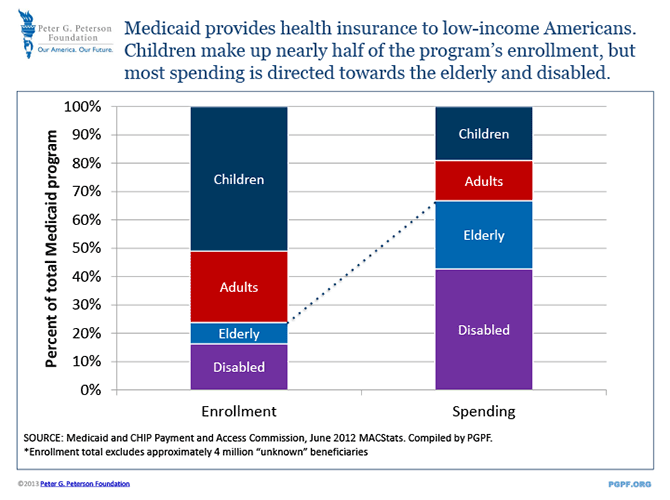You are here
Who Benefits From Medicaid?
One of the biggest misconceptions about Medicaid is that it is a program that provides insurance benefits exclusively for children and low-income families.
Certainly, it is true that Medicaid provides health insurance for a large number of the country's low-income children and families. Approximately one-third of the nation's 79 million children ages 18 and under receive health insurance through Medicaid or the Children's Health Insurance Program. Low-income pregnant women and new mothers also make up a large portion of Medicaid enrollees. Indeed, Medicaid pays for 40 percent of all births in the U.S., covering prenatal services, delivery, and post-partum care.
However, most Medicaid dollars are spent on disabled and elderly beneficiaries, whose incomes and financial resources are low enough to qualify for the program. Although children make up half of the program's beneficiaries, they account for only 20 percent of its costs. By contrast, elderly and disabled beneficiaries make up only about 25 percent of Medicaid's beneficiaries, but account for 70 percent of its costs.

These facts stem largely from disparities in the cost of caring for these different age groups. For those under 18, per person health care costs averaged $2,900 in 2009. For the elderly, it was more than $16,000, more than five times greater. For disabled beneficiaries, it was more than $18,000, or more than six times greater than it was for children.
Older adults and disabled beneficiaries are more likely to need expensive services such as long-term care. Indeed, Medicaid has become the largest single payer of nursing home services in the country, financing about one-third of the total spending. The program also pays 35 percent of the nation's bill for home-based health care.
For more information, see PGPF's Budget Explainer on Medicaid.
